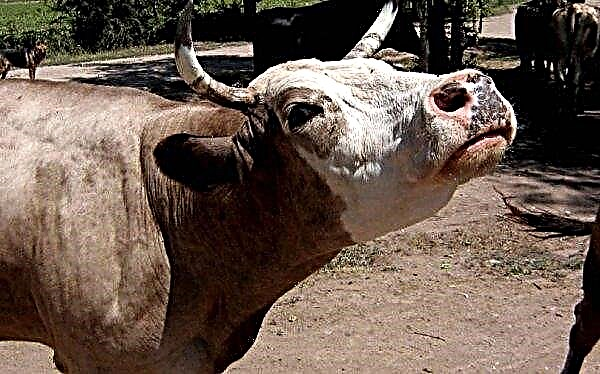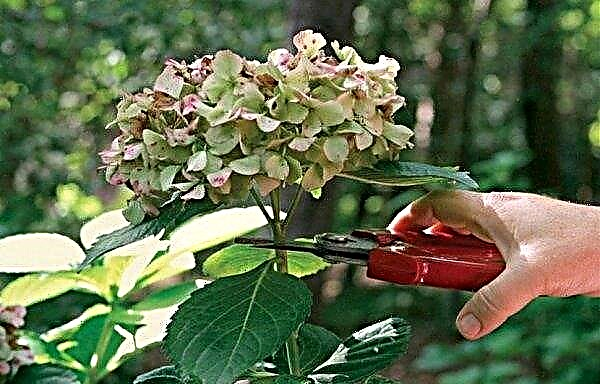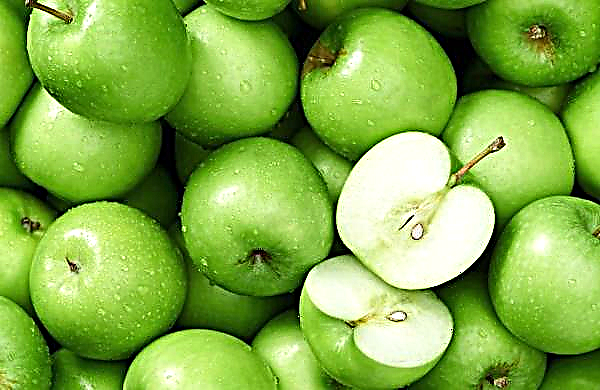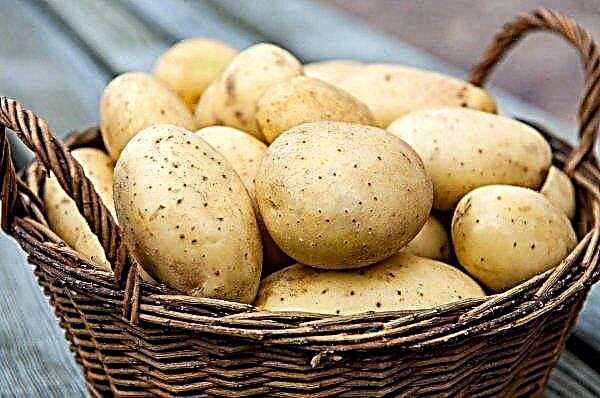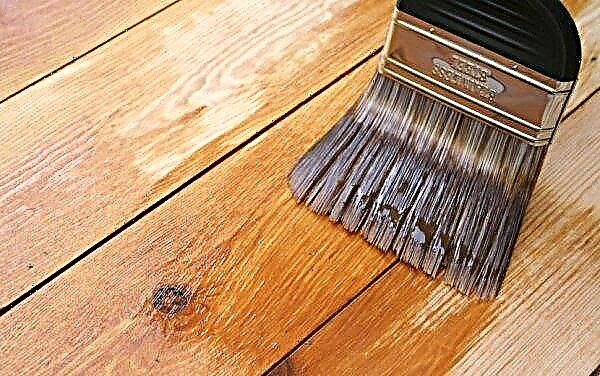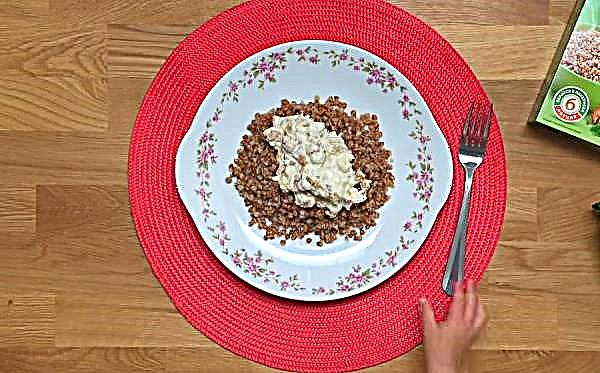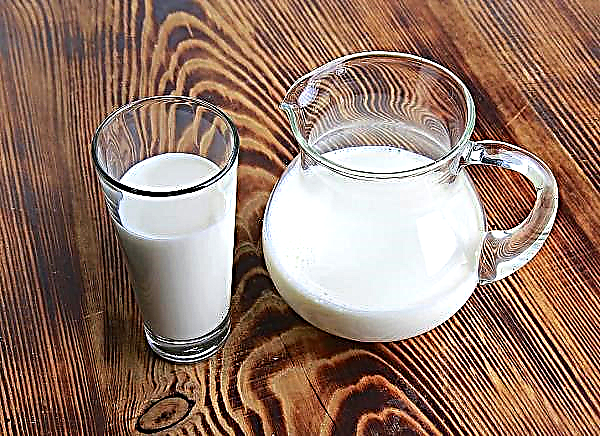Korean fir is one of the most popular ornamental plants commonly used in landscape design. This species is unpretentious, and also features a fairly compact and elegant crown that can perfectly complement both a flower bed and a rock garden in the garden. The article describes in detail the main characteristics, description, and agricultural technology of growing Korean Oberon fir, one of the most common varieties of the species.
Botanical Description
Korean fir Oberon (Abies koreana Oberon) is a small dwarf coniferous tree, consisting of the Pinaceae family. The average height of an adult specimen does not exceed 60 cm, while the crown diameter is up to 40 cm. However, often in plant growing there are forms no more than 30–40 cm high and 20 cm wide. This is due to a rather slow rate of vertical growth of the plant, the average growth of a tree is about 5-7 cm per year.
Crohn in the variety Oberon is rounded, domed. It is formed by densely spaced shoots, covered with flat-sitting, soft needles, up to 2.5 cm long. A distinctive feature of the variety is the special shape of the needles, they are directed upwards, while they have curled edges. The color of the needles is saturated, dark green in color, with a distinct reflection.Did you know? Fir was one of the cult plants of the ancient Slavs. The plant was widely used by shamans for the manufacture of ritual objects, and also symbolized rebirth, dignity and patience.
Fir shoots are smooth, grayish-brown. As the tree grows and ages, the bark on the trunk and branches acquires a dark brown hue, and in the places of maximum compaction, longitudinal deep cracks appear. During the growing season, small cylindrical cones grow up on shoots, up to 6 cm long and not more than 3 cm wide. They consist of dense and resinous scales. After ripening, the bump forms small seeds with the wrong wing.
Landing
In order for the planting of fir to proceed safely, and the plant has taken root perfectly on the site, first of all, you need to choose the right place for planting the seedling. Culture loves moderately lit areas, protected from direct sunlight during the afternoon. The soil conditions are also important for the plant; the tree feels best on moderately acidic and well-drained soils (sandy loam or loamy soils), with a high rate of humic compounds.

Planting seedlings is carried out in early spring (in April) or in autumn (in the first half of October), according to the following scheme:
- About 2 weeks before planting, you need to prepare the site. To do this, dig a hole with a size of 60 × 60 cm (depth × diameter) at a selected location, drainage with a layer of about 10 cm from fine gravel, gravel or broken brick to the bottom. Then, about a third of the pit should be filled with a fertile substrate prepared from garden soil, peat and humus (1: 0.5: 0.5).
- A day before planting, one should also prepare a seedling, it is sprayed with Fitosporin or a 2% solution of Bordeaux fluid.
- A plant is placed in the prepared well, so that the growth point of the root system deepens by about 5 cm.
- Further, all cracks and voids need to be filled with a fertile substrate from garden soil, peat and humus (1: 0.5: 0.5) and compacted well.
- At the end, around the plant it is necessary to create a near-stem circle with a diameter of about 40 cm, and then the seedling should be well watered with water at room temperature.
 Suitable trees for planting are about 5-10 years old. It is recommended to buy plants only in specialized stores, goods from natural markets often do not meet all varietal requirements.
Suitable trees for planting are about 5-10 years old. It is recommended to buy plants only in specialized stores, goods from natural markets often do not meet all varietal requirements.
Fir Care
Each decorative tree and shrub necessarily requires skilled care, and Oberon fir is no exception. Only daily attention to the plant will allow it to provide the optimal microclimate in order to grow for many years. This will require a standard set of agrotechnical procedures, which include timely watering, top dressing, pruning and loosening the trunk circle.
Watering and feeding
Oberon fir is watered throughout the warm period of the year, from the beginning of April to the end of October. Do this procedure no more than 1 time in 2 weeks, but during the summer drought, its frequency is increased to 1-2 waterings per week. Humidification is done abundantly, for this use about 10 liters of water / 1 procedure.

Feeding should also be regular. The first 2-3 years, subject to all the intricacies of planting, the tree does not need top dressing. Then fertilize the plant 1 time / season, approximately in mid-April. To do this, about 150 g of Kemira Universal wagon fertilizer is introduced into the trunk circle, after which the fir needs to be well watered. Alternatively, you can use an aqueous solution of the drug, with a calculation of 150 g / 10 l of water / 1 plant.
Did you know? According to one version, the domestic name of the tree “fir” was formed from the Karelian dialect. From ancient times, the native inhabitants of this region called the plant “pihka”, which literally means “resin”.
Loosening and mulching
Loosening is performed every time after irrigation or rain, but at least 1 time in 7-10 days. The trunk circle is subjected to processing to a depth of about 10-15 cm, while during the procedure it is necessary to clean the tree planting site from all kinds of weeds and other undesirable vegetation.

To reduce the frequency of loosening and watering, the trunk circle of all firs of the so-called Korean type is recommended to be mulched. To do this, you need to fill the soil with a dense layer of sawdust, hay, straw, seed husks, etc., about 15 cm thick. It is recommended to renew the mulch periodically, at least 1 time per month.
Pruning
Pruning grade Oberon is necessary in order to maintain the decorativeness of the crown, as well as to avoid the development of all kinds of infections. Do it 1-2 times a season, in early spring (during April) or in autumn (in the first half of October). All dry, withered shoots, as well as parts of the crown that worsen its decorativeness, must be removed.
Video: Fir Care and Planting
Possible diseases and pests
Often, almost all representatives of the Korean fir species are super resistant species to all kinds of infectious lesions and pests. However, if the conditions for caring for the plant are not observed, many plant breeders face this problem. Of the pests, the crop can be affected by hermes. The parasite rapidly develops in the crown, causing yellowing of the needles. To overcome it, the tree needs to be treated with the Rogor, Antio drug or any interchangeable analogue (according to the manufacturer's instructions).
Of the infectious pathologies, gardeners are most often found with rust. Its pathogen causes characteristic manifestations, in the form of a change in the color of the green mass to orange or yellow-orange. To overcome the development of rust, fir needs to be treated with a 2% solution of Bordeaux mixture. Such procedures are done twice, with a gap of 2 weeks.Important! Adverse effects on the growth and development of fir Oberon are also the proximity to the sprocket and stalk. This must be taken into account when planning the site.

Breeding methods
To obtain new copies of the Oberon variety, cuttings are used. In this case, seed reproduction is not recommended; the procedure leads to the degeneration of the variety or to partial loss by the seedling of the properties and characteristics of mother trees. Any adult plant instance is suitable for cuttings.
The procedure is carried out in the first half of April, as follows:
- From healthy two-year-old shoots, cuttings about 10 cm long are cut. They must have at least 1 full kidney, as well as the so-called heel. To obtain it, the cuttings are selected so that a small perpendicular process about 1 cm long is formed at the cut site.
- The heel is cleared of burrs, giving rounded edges.
- The cuttings are sprayed with a solution of Fundazole, and then, after it dries, they are planted in a mixture of equal parts of leafy soil, sand and humus.
- For 2-3 years, the seedling is grown indoors. The window sill with the brightest, but moderately shaded light is considered the best condition. The plant is provided with moderate watering, the soil should always be slightly moist. For winter, it is recommended that the seedlings be transferred to a cool place whenever possible.
- After rooting, the fir is dived into the open soil. Do it in the spring, around the first half of April.

The use of wood in landscape design
Korean fir Oberon is popular among landscape designers as a universal decorative look that can emphasize, as well as give decorativeness to almost any landscape or flowerbed. In this case, the tree can become both an addition and the central variety in the garden.
Did you know? The fir branches contain useful oils from which various medicines are made. In needles - vitamin C, and in the bark - tannins.
However, the plant most harmoniously looks in:
- rock gardens;
- rockeries;
- group coniferous planting;
- along garden paths or borders;
- japanese rock garden.

Oberon fir is a vivid example of a universal ornamental plant that can complement any landscape design. The unique shape and size of the plant allows it to both emphasize the basic elements of the flower bed and become its center. However, for this you should spend a lot of time and effort on a proper fit, as well as quality care. Without this decorative fir can not please.





